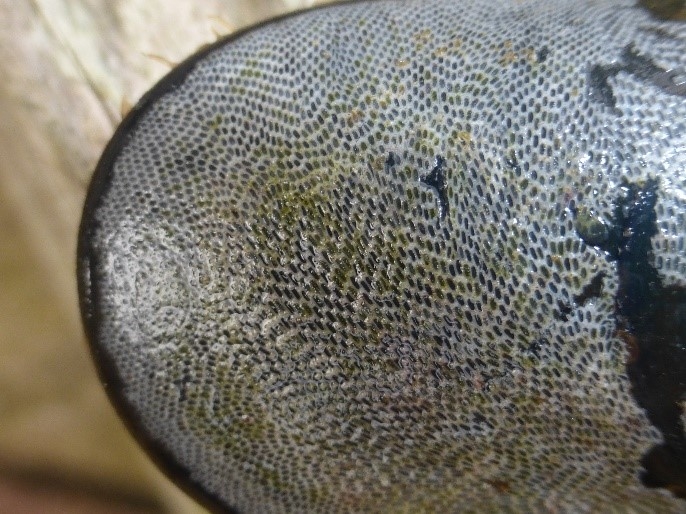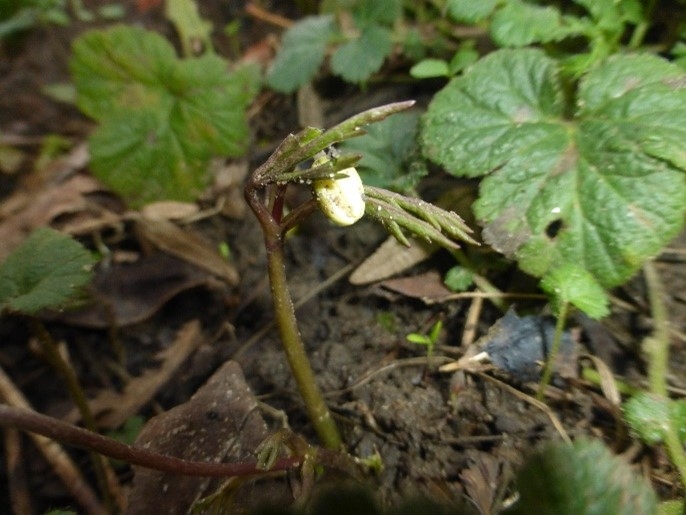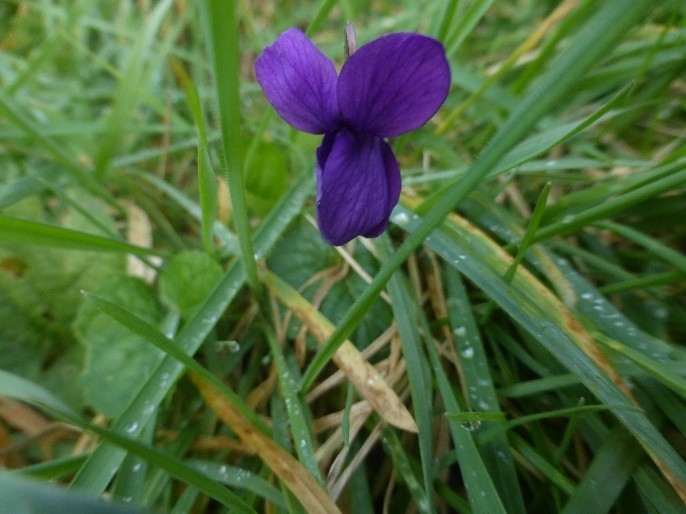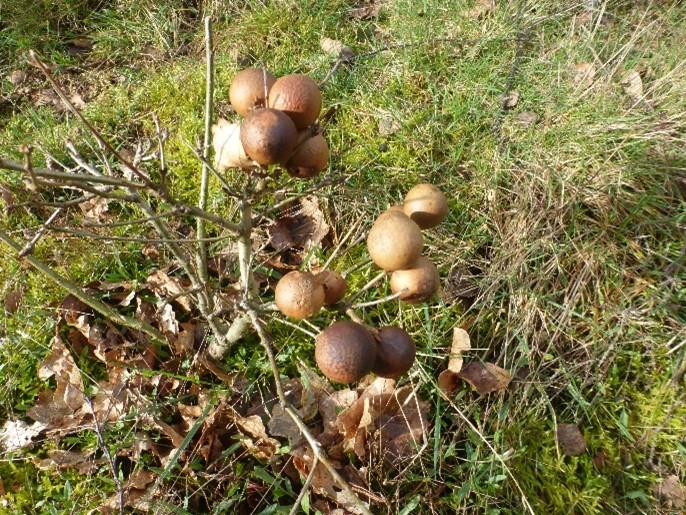What a month! We are edging towards the spring, not racing, but we’ve had some glorious sunshine, with some obvious heat in it. We’ve also had some frost, wind and the considerable rainfall that we have become accustomed to. Water is still standing on many of the fields that I see regularly. But, unless you have been confined to your barracks, you cannot have missed the seasonal direction of travel.

Our first picture though is a celebration of winter (at least for me, it is), Winter is the season for mussels. Not everyone’s favourite, I know, but I love them. This is a close-up of one of the shells in my supper during the first week of the month. OK, this is not a “wild” mussel, but the strange growth on the surface is fascinating. I have no idea what it is, I thought perhaps it was the eggs of barnacles, but even magnified I can’t be sure. Whatever it is, the gorgeous geometric patterns are a beautiful example of the order in nature.
Back outside, I made a few notes during the month of significant sightings, and I feel compelled to share some with you. On the 9th some of the dozens of ladybirds that have spent the winter hidden in the bedroom window frame began to wake up. On the same day, my first sighting of Blackthorn blossom seemed a little earlier than normal. My first bumble bee and daffodil. Later that week, more ladybirds to put out before bed, and in the daytime, another bumble bee. Then, on the 16th a honey bee! Blue tits, very obviously paired, the “Eeeeze” of a distant greenfinch high up top somewhere.

Then, down in my little DIY woodland reserve, the first signs of Wood Anemone. It’s taken me two attempts to get these to flower. I trust completely the quality of my stock and the certification of their origins, but doubt my own efforts to plant the first batch. Some did take, but so far have not flowered. I ordered a second lot and took more care about the process. That was last year, and this year, by mid-month I had the making of 6 flowers! If you don’t have a suitable spot in your own garden, never mind, there will be a woodland in your area that by now is close to showing a temporary, but stunning pink-tinged white carpet. Get out and see them NOW! These are the first of the specialist woodland floor flowerings. I can’t tell you exactly how long they last, but this year I will get a good feel for it! Scattered about, in amongst the leaves of wood avens and red campion I can see the next one developing nicely - bluebells. I’m slightly disappointed that my wild garlic has not spread into a thick overwhelming blanket, but I can see the few individual groups of those coming along too. The floods don’t seem to have harmed things in any way.

The other little gem I look forward to in February is now fully out. I found this one on a walk on the wet grassland of freshwater marsh of Suffolk. There are many varieties of violet, but I think this one is sweet violet. How many times do I wish that I’d taken more pictures, or carried the book with me! It could be common dog violet. I’m used to seeing these – which ever they are – in dense clumps like the ones along the edge of the pavement near home. I’ve seen others in similar positions. Is there perhaps an alteration to the chemistry of the subsoil due to the bedding under the slabs? Is it perhaps a little drier, more acid, more alkaline? I have tried to establish individuals at the edge of my little patch, but with doubtful success. Oh well, if I have to go further afield in order to experience this level of intense blue, then it can only be good. Incidentally, my book says March to May. Are these, too, a little early?
The third week of the month was spent in Suffolk, as hinted at above. My, there is some special wildlife in Suffolk. Along the coastal fringe the sandy soils are free-draining, and produce wonderful heathland. Lowland heath is one of the rarest habitats in the country, but not in Suffolk. Around the fields the hedgerows were just beginning to offer the first hints of green in the form of hawthorn leaves. Every year is the same, first the pioneering white blossom of blackthorn, and just as it gets going, the hedgerow bushes that will not show white for another month or so, begin to show the pioneering green of hawthorn instead. Across the fields, hares are chasing each other in a warm-up to the main boxing event. On the heathland proper, pairs of Dartford Warblers are getting excited. I’ve never had such close-up views of this quite rare bird. In the 60s they were reduced to only 10 pairs, hanging on in the heathlands of Dorset. Now there are 3200 pairs and these are spread right across southern and eastern heathlands in England. Particularly vulnerable to cold winters, climate change can only assist their survival here.

Whilst tramping the heathland I spotted this little beauty. Many of you will recognise the “fruits” of this tree as Oak Apples. Not fruit at all, and only confined to oak these hard, round balls are a growthy reaction to an infestation of a gall wasp. Folklore says that the contents of the oak apple on Michaelmas Day will determine the success of this year’s crop, be it worm, spider, fly or nothing, it could be pleasant, ruined, moderate or diseased. I guess some would find out when they collect the apples to make ink. 29th May is Oak Apple Day, and a celebration of the restoration of King Charles (II!) to the throne.
For me the single highlight of our trip was undoubtedly hearing the first Chiff Chaff of 2024. Again, earlier than I’ve ever experienced before. I wonder when the next one will be. I came home to spot the firmly bonded pair of blue tits checking out my nest boxes, buds bursting on quince, clematis and roses, and now eleven wood anemones! It’s exciting. It’s not even March yet!


